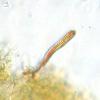
08-01-2026 21:22
 Blasco Rafael
Blasco Rafael
Hola, He recogido esta muestra de Orbilia sobre Re

07-01-2026 10:24
 Danny Newman
Danny Newman
Pezicula sp. on indet. hardwood Appalachian Highl

07-01-2026 22:22
 Danny Newman
Danny Newman
Tatraea sp. on indet. hardwood The Swag, Great Sm

07-01-2026 17:29
 Marc Detollenaere
Marc Detollenaere
Dear Forum,On a barkless Populus I found some smal

10-11-2021 17:33
 Riet van Oosten
Riet van Oosten
Add-on topic http://www.ascofrance.com/forum/7059

07-01-2026 10:05
 Danny Newman
Danny Newman
cf. Chaetospermum on XylariaCosby Campground, Grea

02-01-2026 17:43
MARICEL PATINOHi there, although I couldn't see the fruitbody, I

04-01-2026 17:45
 Stephen Martin Mifsud
Stephen Martin Mifsud
I was happy to find these orange asmocyetes which
Orbilia vinosa? on Prunus padus
Marja Pennanen,
03-02-2011 11:47
it's still winter here and will be for 2-3 months. There is snow maybe 70-80 centimeters. But many fungi are still in qood condition.
This Orbilia is up to 1 mm wide:
Marja Pennanen,
03-02-2011 11:49
Marja Pennanen,
03-02-2011 11:52
Stip Helleman,
03-02-2011 12:10

Re:Orbilia vinosa? on Prunus padus
Hi Marja,
I think you are right
cheers Stip
I think you are right
cheers Stip
Hans-Otto Baral,
03-02-2011 13:18

Re:Orbilia vinosa? on Prunus padus
yes, and Stip is also all right :-)
I am sure Guy Marson would now search for conidia around the apothecia, because there are perhaps three different subspecies with very different branched conidia (Trinacrium, Dwayaangam).
Could you please tell me more data? How far was the substrate above the snow? I would like to note the data (date and site). I am not sure if I have a Finish collection of O. vinosa at all.
Only 0-5 cm snow here...
Zotto
I am sure Guy Marson would now search for conidia around the apothecia, because there are perhaps three different subspecies with very different branched conidia (Trinacrium, Dwayaangam).
Could you please tell me more data? How far was the substrate above the snow? I would like to note the data (date and site). I am not sure if I have a Finish collection of O. vinosa at all.
Only 0-5 cm snow here...
Zotto
Marja Pennanen,
03-02-2011 16:27
Re:Orbilia vinosa? on Prunus padus
Hi Zotto,
I collected these last sunday (30.1.2011) from my neighbourhood Raivionmäki (part of town), Outokumpu (town), North Carelia.
One of my neighbours had cut a Prunus padus, that was bending over the road.
There were some twigs fallen on the road and I picked some.
So I have no idea of how much above the snow it was ealier.
And it was above because it looked dry, not even icy, so some other branches had shadowed it.
There must be a collection of O. vinosa from Karsten somewhere, but propably no others from Finland...
I'll try to look for more microdata later, if my Old Russian shows something more ;)
I've found Orbilias ealier during winter, too. They stand very well the cold circumstances, just schrink almoust to nonexistence.
I've sometimes found them only after bringing a twig inside because of something else on them too.
Marja
I collected these last sunday (30.1.2011) from my neighbourhood Raivionmäki (part of town), Outokumpu (town), North Carelia.
One of my neighbours had cut a Prunus padus, that was bending over the road.
There were some twigs fallen on the road and I picked some.
So I have no idea of how much above the snow it was ealier.
And it was above because it looked dry, not even icy, so some other branches had shadowed it.
There must be a collection of O. vinosa from Karsten somewhere, but propably no others from Finland...
I'll try to look for more microdata later, if my Old Russian shows something more ;)
I've found Orbilias ealier during winter, too. They stand very well the cold circumstances, just schrink almoust to nonexistence.
I've sometimes found them only after bringing a twig inside because of something else on them too.
Marja
Hans-Otto Baral,
03-02-2011 19:24

Re:Orbilia vinosa? on Prunus padus
Hi Marja
that's fine, you know where to find them. O.vinosa is among the most commonest of drought-tolerant Orbilias.
You said the spores contain some small droplets. Did you notice the very elongate spore body? Visible in your left and central spore.
Oh yes, Karsten collected O. vinosa and the parasite Helicogonium orbiliarum near Merimasku, and described this as O. rubinella by overlooking the parasite-host relation.
Zotto
that's fine, you know where to find them. O.vinosa is among the most commonest of drought-tolerant Orbilias.
You said the spores contain some small droplets. Did you notice the very elongate spore body? Visible in your left and central spore.
Oh yes, Karsten collected O. vinosa and the parasite Helicogonium orbiliarum near Merimasku, and described this as O. rubinella by overlooking the parasite-host relation.
Zotto
Marja Pennanen,
04-02-2011 17:47
Re:Orbilia vinosa? on Prunus padus
Lets see,
I got the instruction of conidia hunting from Guy.
Unfortunately I can not obey them because of lack of instruments.
So I introduce my own method :)
I used a pipette from an old medicine bottle and infected it ;)
I found something or let's say many.
They are about 30-50 micrometers long and have 2-4 branches.
Is this what was wanted?
About that spore body. I don't know, what it is. But suppose you mean the wider end with a longer droplet, which could be easier seen with a smaller magnification of the Old Russian
Marja
I got the instruction of conidia hunting from Guy.
Unfortunately I can not obey them because of lack of instruments.
So I introduce my own method :)
I used a pipette from an old medicine bottle and infected it ;)
I found something or let's say many.
They are about 30-50 micrometers long and have 2-4 branches.
Is this what was wanted?
About that spore body. I don't know, what it is. But suppose you mean the wider end with a longer droplet, which could be easier seen with a smaller magnification of the Old Russian
Marja
Hans-Otto Baral,
04-02-2011 18:18

Re:Orbilia vinosa? on Prunus padus
Dear Marja
Wonderful! Did you make photos of more conidia? Are they all such 4-armed?
This type of Trinacrium with 4 arms is so far not clear to which Orbilia it belongs. From which collection did you get them, from that of O. vinosa?
Zotto
Wonderful! Did you make photos of more conidia? Are they all such 4-armed?
This type of Trinacrium with 4 arms is so far not clear to which Orbilia it belongs. From which collection did you get them, from that of O. vinosa?
Zotto
Marja Pennanen,
04-02-2011 18:29
Marja Pennanen,
04-02-2011 18:30
Hans-Otto Baral,
04-02-2011 18:56

Re:Orbilia vinosa? on Prunus padus
My only idea is the following: we had one collection in the Swiss mountains (at 880 m), where O. vinosa carried these conidia. But They we assume that they do not belong to this Orbilia but to an undescribed Hyalorbilia which grew there in close vicinity. In the attach you see thiy Hyalorbilia, very small, cream-coloured.
Perhaps you find anything similar around the apos?
Zotto
Perhaps you find anything similar around the apos?
Zotto
Marja Pennanen,
04-02-2011 20:46
Re:Orbilia vinosa? on Prunus padus
Hi Otto,
I put the specimen drying, but can give it some moisture.
I'll look, but have some doubts.
Did you notice the growing pattern on those conidias? Could they be really growing and belong to the same species? Maybe its only my imagination ;) With no knowledge one can at least make wrong assumptions...
Marja
I put the specimen drying, but can give it some moisture.
I'll look, but have some doubts.
Did you notice the growing pattern on those conidias? Could they be really growing and belong to the same species? Maybe its only my imagination ;) With no knowledge one can at least make wrong assumptions...
Marja
Hans-Otto Baral,
04-02-2011 23:48

Re:Orbilia vinosa? on Prunus padus
The conidia you found surely belong to one species. That's variation which we often have in Orbilia and which makes life heavy but interesting. Some species produce macro- and quite different microconidia. But variation between two and four arms, or branched and unbranched conidia, is quite normal, and some articles were written mainly about that phenomenon. This illustrates how artificial these various genera with staurospores are, such as Dwayaangam, Curucispora etc. F.ex.. in O. aristata you have Trinacrium (two arms and one stipe = 3 extremities), Curucispora (like a cross) and Dwayaangam (5 extremities) as anamorph in one species.
Zotto
Zotto
Marja Pennanen,
05-02-2011 16:27
Re:Orbilia vinosa? on Prunus padus
Hi,
I moistured the specimen an studied it with a 30x magnification loupe.
I saw no other fruitbodies.
The Hyalorbilia seems to be about 0,1-0,2 mm wide and so quite easy to distinguish (almoust even without a loupe).
Is there some documents about Orcilia conidia in your DVD?
It's my shame, that I've studied just a little part of that material.
Marja
I moistured the specimen an studied it with a 30x magnification loupe.
I saw no other fruitbodies.
The Hyalorbilia seems to be about 0,1-0,2 mm wide and so quite easy to distinguish (almoust even without a loupe).
Is there some documents about Orcilia conidia in your DVD?
It's my shame, that I've studied just a little part of that material.
Marja
Hans-Otto Baral,
05-02-2011 17:01

Re:Orbilia vinosa? on Prunus padus
There is a folder in Orbiliomycetes called "1a Anamorphs, survey". I hope it existed already in 2005. There are lots of drawings. But for text on ana-.teleo relations you must wait our monograph, :-)
Zotto
Zotto









 14172.jpg
14172.jpg